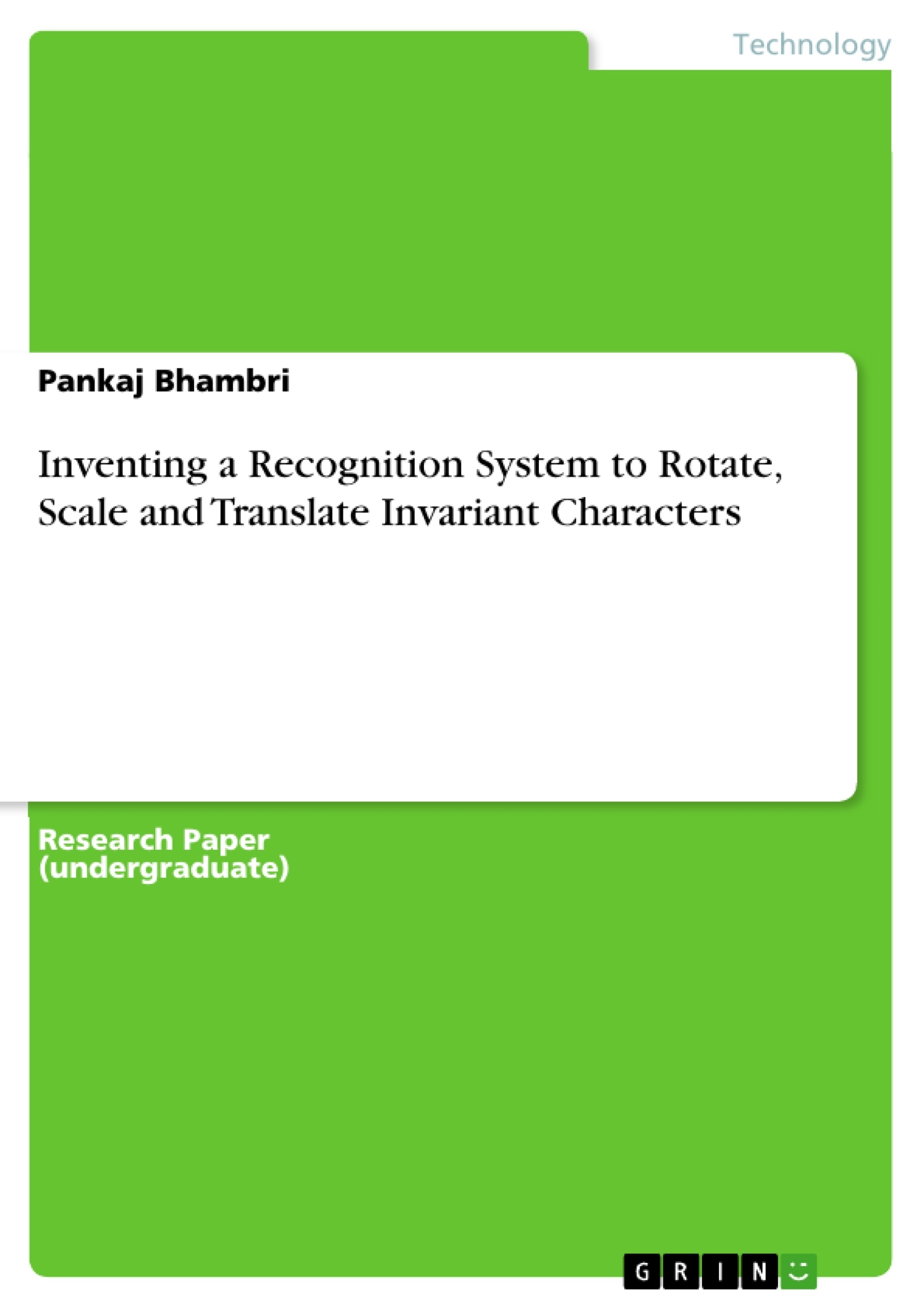The traditional test extraction suffers from the drawback of size style and rotation of text arose on the images. Thus the scanning device needs to focus on the textual region of the images. Which is going to involve the person who is using the application software? This can be automated using algorithm which is written and designed in such a way so that the text area on the image will be easily identified either at some orientation or at variable sizes. In the presented work, the characters are segmented by using the pixel neighborhood technique and resized to a 32x32 block.
The centre of gravity of the different characters is computed by using the first order moments. The contour of the pixel is extracted by means of Robert’s operator. The radii from centre of gravity to contour pixel and are arranged in descending order. If the same character is rotated about its centre of gravity by some angle, the same radii are extracted and are arranged in descending order.
It is observed that the first few radii are same for the same character if rotated at any angle. This gives the rotation invariant character recognition. Further, the characters are normalized with respect to size by dividing the radii by mean radius. The location invariance is obtained by use of centre of gravity. In the proposed algorithm, the different in-variances are considered into the features extraction process such that the normalization of characters is done in all respect. Once the features of different characters are set and are constant for the same object in either form, then that features can be used for character identification purposes.
Inhaltsverzeichnis (Table of Contents)
- CHAPTER 1
- INTRODUCTION
- 1.1 ACCURACY WITH OCR
- 1.2 BACK-PROPAGATION NEURAL NETWORK CLASSIFIER
- 1.2.1 First Phase: Propagation
- 1.2.2 Second Phase: Weight Update
- 1.3 ALGORITHM
- CHAPTER 2
- LITERATURE REVIEW
- CHAPTER 3
- PRESENT WORK
- 3.1 PROBLEM FORMULATION
- 3.2 OBJECTIVES
- 3.3 IMAGE PRE-PROCESSING
- 3.4 CHARACTER SEGMENTATION AND NORMALIZATION
- 3.5 CHARACTER IDENTIFICATION
- 3.6 APPLICATION CHARACTER RECOGNITION SYSTEM
- 3.6.1. Text/Characters Segmentation and Training:
- 3.7 HARDWARE AND SOFTWARE REQUIREMENTS
- CHAPTER 4
- RESULTS AND DISCUSSION
- CHAPTER 5
- CONCLUSION AND FUTURE SCOPE
- REFERENCES
Zielsetzung und Themenschwerpunkte (Objectives and Key Themes)
This document explores the process of extracting text from digitized images, focusing on the use of Optical Character Recognition (OCR) technology and neural network classifiers. It aims to analyze the challenges associated with accurate text extraction and introduce a proposed system for character recognition based on a back-propagation neural network.
- Accuracy of OCR technology and its limitations
- Character segmentation and recognition in document images
- The role of document analysis in improving OCR performance
- The application of back-propagation neural networks for character classification
- The development of a character recognition system utilizing a trained neural network
Zusammenfassung der Kapitel (Chapter Summaries)
- Chapter 1: Introduction This chapter introduces the field of document image analysis and its relevance in various applications. It highlights the importance of accurate text extraction from images and discusses the challenges involved in the process. The chapter also provides a brief overview of Optical Character Recognition (OCR) technology and the use of neural network classifiers in character recognition.
- Chapter 2: Literature Review This chapter presents a comprehensive review of existing research and literature on document image analysis, focusing on the different approaches, algorithms, and techniques used for text extraction. It discusses various OCR techniques and their strengths and weaknesses, as well as the advancements in neural network-based character recognition systems.
- Chapter 3: Present Work This chapter outlines the proposed system for character recognition, detailing the objectives, methodology, and implementation of the system. It describes the image pre-processing steps, character segmentation techniques, and character identification using a back-propagation neural network. The chapter also discusses the hardware and software requirements for the system.
- Chapter 4: Results and Discussion This chapter presents the results obtained from testing the proposed character recognition system, analyzing its performance and effectiveness. It discusses the accuracy of character recognition, the impact of different parameters on system performance, and compares the results with other existing methods.
Schlüsselwörter (Keywords)
Document image analysis, Optical Character Recognition (OCR), back-propagation neural network, character segmentation, character recognition, document analysis, image pre-processing, neural network training, system implementation, character identification, accuracy evaluation.
- Quote paper
- Pankaj Bhambri (Author), 2018, Inventing a Recognition System to Rotate, Scale and Translate Invariant Characters, Munich, GRIN Verlag, https://www.grin.com/document/427526



